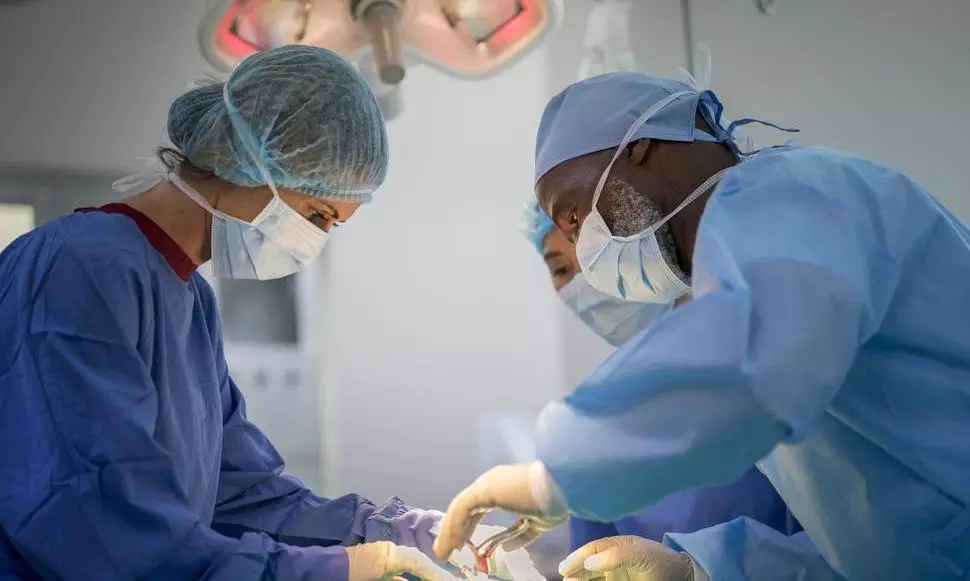
UK surgeons perform combined C-sec, ovarian cancer surgery on 4 women
text_fieldsLondon: In a groundbreaking medical procedure, four women in the UK successfully underwent a combined surgery, in which they gave birth by caesarean section (C-sec) and at the same time had surgery to reduce their risk of ovarian cancer.
The women were all carriers of the BRCA1 or BRCA2 gene alterations, which puts them at a lifetime higher risk of ovarian cancer.
Risk-reducing surgery for these patients, known as a bilateral salpingo-oophorectomy (RRSO), is the only proven way to reduce ovarian cancer mortality. It reduces ovarian cancer risk by at least 95 per cent.
Usually, it is a standalone procedure, where the fallopian tubes and ovaries are removed. The first such case of a C-sec with the risk-reducing RRSO to reduce ovarian cancer risk was done in 2018 by a team at the University College London Hospital (UCLH).
However, the study, published in Obstetrics and Gynecology details case reports of four women, carrying the BRCA gene alteration and who were due to have a C-sec.
All four women, between 40 and 45 years old, were receiving maternity care at UCLH between March 2018 and March 2022. To be considered for the procedure, the women had to be over 35 or 40 years old for the BRCA1 and BRCA2 alterations respectively, and not planning any further children.
 Also Read:Weight loss surgery leads to decline in oral health: Study
Also Read:Weight loss surgery leads to decline in oral health: Study
All four surgeries went well and none of the women had serious post-surgical complications, said the researchers at UCLH.
Patients did not need to stay in the hospital any longer than they would have after a C-sec alone. There is a theoretical possibility of greater blood loss with risk-reducing surgery at the time of C-sec delivery -- but there was no evidence that this was a problem in these cases.
"Offering the two-in-one surgery could prove very beneficial to other women at high risk of ovarian cancer, who would then avoid the need for separate risk-reducing surgery. We were delighted to hear from the four patients how happy they were to have had the combined procedure," said Professor Adam Rosenthal, consultant gynaecologist at UCLH Biomedical Research Center.
"The number of women who give birth by caesarean section is increasing around the world, as is the number of women who know they carry a gene alteration which increases their ovarian cancer risk. This means many more women may be suitable for the combined procedure.
"There is also a potential cost saving to any health care system by avoiding the need for two separate operations," Rosenthal said.
All women reported a high level of satisfaction with the two-in-one procedure. While the risk-reducing surgery results in infertility, women who have had eggs harvested prior to risk-reducing surgery may still be able to benefit from assisted reproduction.
It will also result in early menopause, so hormone replacement therapy is recommended until 51 years of age unless there are reasons not to give it, such as previous treatment for breast cancer, the researchers said.
With inputs from agencies

















